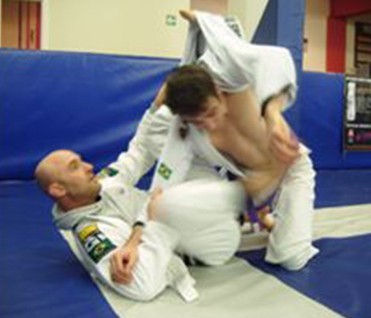Issue 8: An audit of sports injuries
“Each year 1-1.5 million people attend an A&E department in Britain due to a sporting injury” (Nicholl et al 1991 cited in Boyce and Quigley 2004)”.
A substantial number of amateur sports athletes believe that the only treatment pathway available for them to get pain relief and advice is to attend A&E (Grimble et al, 1993) leading to approximately 5,600 a day Accident and Emergency (A&E) department attendances within the UK for sports related injuries (Cook et al, 2003). According to Falvey et al (2009) this accounts for the majority of the workload of an A&E department, with the highest number of attendances being on Monday as a result of weekend sports fixtures.

Comparative study of aquatic-based and land-based muscle power training’s effects on muscle power…
by Steven Ross, Teesside University, UK.
Methods of training and rehabilitation of musculoskeletal injury are a much discussed topic within Sports and Physical therapy. However, there is limited research with an aim to establishing an effective aquatic based training programme for increasing muscle power output for both training and rehabilitative purposes. The purpose of the current study was to compare land-based training with training performed at an immersion depth of 1.35m in a warm hydrotherapy pool on muscle power output. A total of 21 physically active individuals, between the ages of 20-27, free of injury or disease volunteered to take part in the study.The study was designed as a randomised controlled trial in which participants completed two training sessions per week for four weeks in either a hydrotherapy pool or gym environment, seven of the participants did not complete any prescribed exercise and were used as a Control group.
Introduction
by anon
“Each year 1-1.5 million people attend an A&E department in Britain due to a sporting injury” (Nicholl et al 1991 cited in Boyce and Quigley 2004)”.
A substantial number of amateur sports athletes believe that the only treatment pathway available for them to get pain relief and advice is to attend A&E (Grimble et al, 1993) leading to approximately 5,600 a day Accident and Emergency (A&E) department attendances within the UK for sports related injuries (Cook et al, 2003). According to Falvey et al (2009) this accounts for the majority of the workload of an A&E department, with the highest number of attendances being on Monday as a result of weekend sports fixtures.
Introduction to Brazilian Jiu-Jitsu
by anon
Derived from Judo, Brazilian Jiu-Jitsu (BJJ) was refined in such a way that a smaller opponent could overcome a larger, more physically gifted assailant using the concepts of leverage, timing and mobility. It is a ground based art relying mainly on grappling techniques to reduce the size and strength advantages of an adversary (International Brazilian Jiu-Jitsu Federation (IBJJF), 2009a). The popularity of BJJ has risen rapidly within the last 15 years since it was showcased to the world by Royce Gracie in the original Ultimate Fighting Championship, an elimination tournament pitching multiple martial arts styles against each other. Gracie proved the effectiveness of the art by winning 3 of the first 4 events, submitting skilled opponents, some in excess of 250lbs, at a weight of just 180lbs himself (roycegracie.tv, 2010).
Since the rise in popularity, BJJ is now practised more as a sporting discipline rather than a method of self defence. It is also a major component of Mixed Martial Arts (MMA) competition, where a vast majority of fights end up with at least one opponent on the ground; either by takedown or knockdown. According to Compustrike statistics from the last 10 recorded events, thirty nine of forty fights in Strikeforce and the Ultimate Fighting Championship ended up on the ground (Compustrike, 2010).
High incidence of injury in the gym environment suggests the need for gyms to…
by Sophie Drake, Di Leva, R., and Lahart, I
The 6 monthgym-based injury history of 137 attendees (72 males and 65 females; mean±SD age= years) of the same council run gym was assessed using a facilitated 6-month recall questionnaire. The questionnaire consisted of questions relating todemographical information, training habits, and injury occurrence details. (Give injury occurrence parameters assessed.)All participants completed an informed consent after verbally receiving information about the study. Institutional ethical approval was granted prior to data collection.
Sports Injury Clinic
by anon
Sports injury clinics have been reviewed for there value (Galasko et al. 1982) and to assess the need for sports injury clinics (Devereaux and Lachmann, 1983). However as can be noticed these studies are dated during the 1980’s, therefore this study aims to describe patient presentation over a 5-week period, as injuries treated within sport injuries clinics could provide valuable data on representation of the sports injury problems, providing a full spectrum of injury severity (Finch and Kenihan, 2001).
The effect of ice on acute soft tissue injuries
by anon
This research project investigates the effects of cryotherapy on acute soft tissue injuries caused in a sporting environment. Cryotherapy has many different aspects surrounding the usage of such modalities. The research project will discuss several areas including the clinical effects of cryotherapy, modality options and phase change, application times and protocols and the effects of nerve conduction velocity and the pain gate cycle upon pain relief as a result of cryotherapy treatment. Differing theories related to the effect of cryotherapy on pain relief will be evaluated in an attempt to establish the most supported theory for this effect. Also the effects of different cryotherapy modalities will be discussed to establish if there is a difference in the effects produce between different modalities.

